Kirin Views is the second series of Kirin Capital towards the goal of “Know Vietnam, Long Vietnam”. This column provides Kirin’s observations and opinions on Vietnamese market through in-depth research driven by an expert team with decades of experience, assisting investors at home and abroad in better understanding the potential opportunities of Vietnam and join hands with “Know Vietnam, Long Vietnam”.
If you ask who is “Vietnam Thế Giới Di Động”? Then the answer is likely Mobile World (MWG), the undisputed leader in the field.
Mobile World is Vietnam’s largest 3C (Computer, Communication, and Consumer Electronics) retail company, with a market share of up to 50% in the 3C retail sector. In addition to mobile phones and 3C products, Mobile World has also expanded its business into household appliances, fresh groceries, and even pharmaceuticals. It has not only established a presence throughout Vietnam but has also opened stores in Cambodia.
However, from ceasing new store openings in the last quarter of the previous year to closing down all branches in Cambodia at the beginning of this year, and most recently, news of laying off 9,000 employees within six months, Mobile World seems to have lost its former glory. So, is this due to the unfavorable economic environment or inherent flaws in Mobile World’s business model? This is the question that this article will answer.
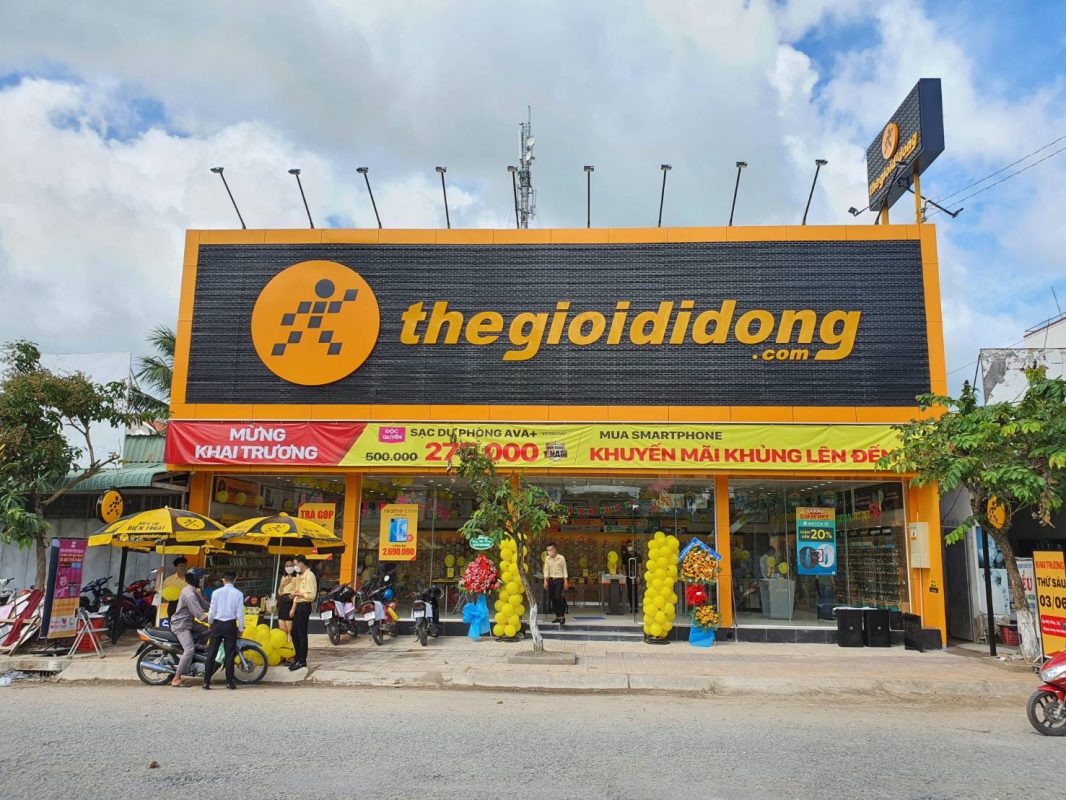
01 The Development of The Gioi Di Dong
If we look back at the development history of Mobile World, it can be roughly divided into four stages:
2004-2014: Digital 3C Channel Retailer
After completing his MBA in France, Mobile World’s founder, Nguyen Duc Tai, returned to Vietnam and worked as a CFO in a Swiss multinational company. After 8 years, he decided to resign and start his own business by opening three mobile phone stores, but due to a lack of experience, he quickly faced failure.
Subsequently, Nguyen Duc Tai joined the strategic planning department of S-Fone, Vietnam’s first mobile operator, to learn and gain experience. In 2004, he ventured into entrepreneurship once again and established Mobile World, a specialized mobile phone retail store (Thế Giới Di Động). This time, the venture was successful, and by 2014, Mobile World had expanded to 330 stores.
While Mobile World was flourishing, Nguyen Duc Tai also established “Điện Máy Xanh”, a specialized retailer of household appliances, in 2010. By 2014, Dien May Xanh had also grown to 22 stores.
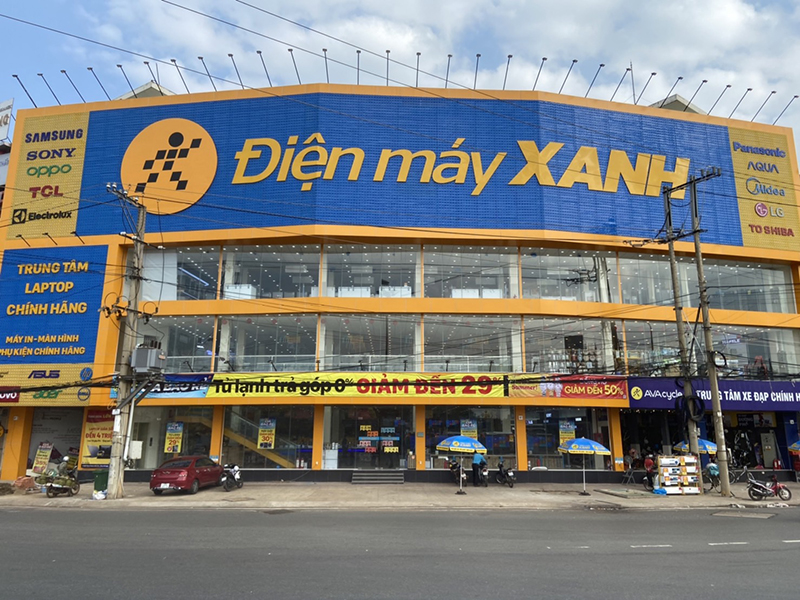
In the same year, Mobile World was listed on the Ho Chi Minh Stock Exchange with the stock code MWG. As of now, it remains the largest market capitalization 3C retail company.

2014-2017: Expansion into Fresh Produce and Fast-Moving Consumer Goods (FMCG)
During this period, Mobile World and Dien May Xanh embarked on a rapid expansion, opening stores in all 63 provinces and cities across the country within four years. In 2015-2016, they further expanded into the fresh produce and fast-moving consumer goods (FMCG) sectors, opening 40 stores under the brand Bách Hóa Xanh.
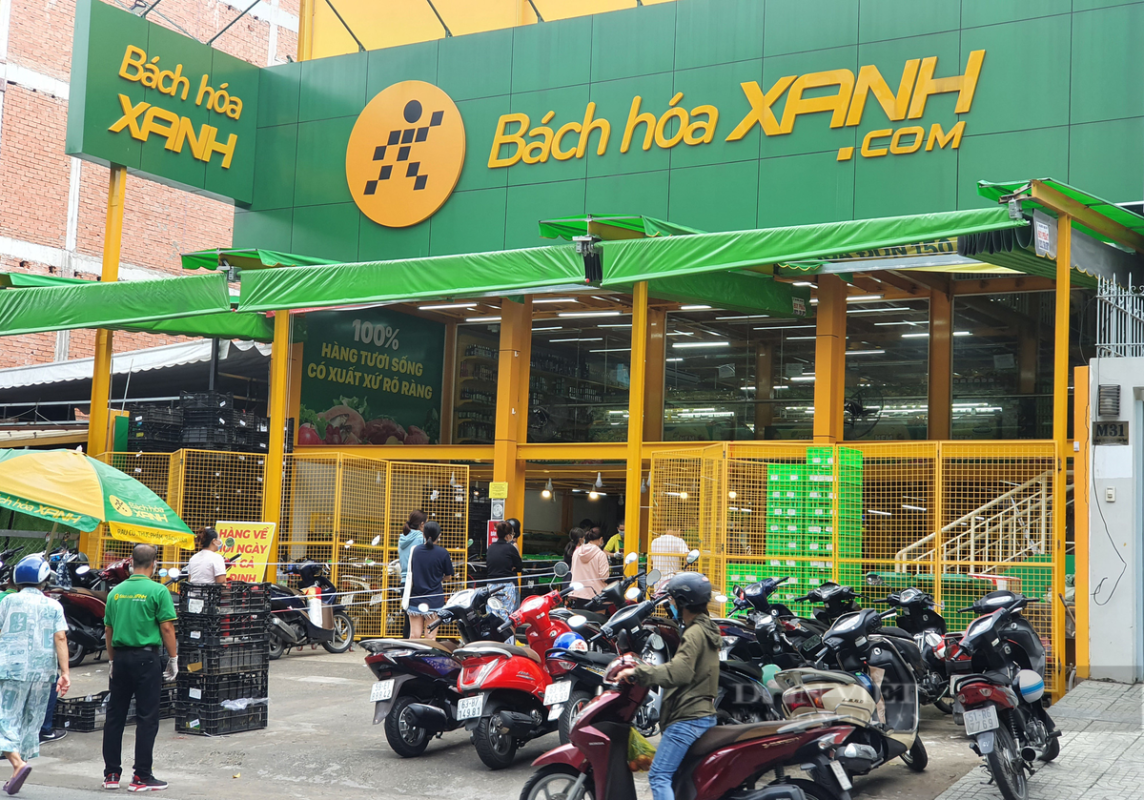
2017-2020: Expansion into the Cambodian Market and Domestic Adjustment
In 2017, Mobile World expanded into the Cambodian market by opening its first mobile phone store called Bigphone. In 2019, it upgraded Bigphone to Bluetronics, equivalent to Blue Store in Vietnam’s domestic market. By 2020, Bluetronics had grown to 37 stores, making it the largest 3C retailer in Cambodia.
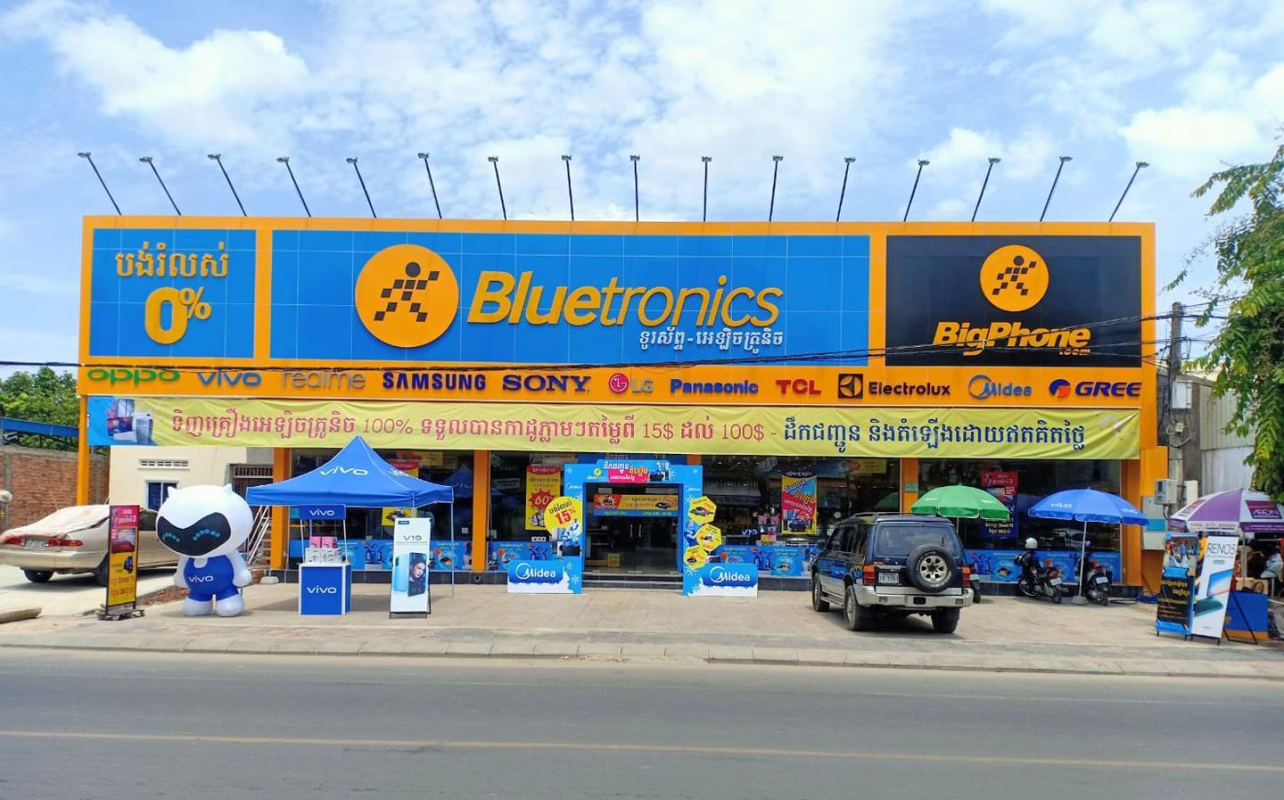
However, in Vietnam, due to the increasingly saturated mobile phone market, the number of Mobile World stores decreased by 15% over the course of two years. Dien May Xanh also began to experiment with opening Supermini stores, aiming to expand market share while saving on store opening costs. Within six months, they opened 302 Supermini stores.

2021 – Present: Expansion into the Pharmaceutical Sector and Overseas Business Adjustment
In 2021, An Khang Pharmacy became a wholly-owned subsidiary of Mobile World Group, marking its official entry into the pharmaceutical sector. It began a large-scale expansion, growing from 68 stores in 2020 to 500 stores by 2022. Additionally, Mobile World Group made adjustments to its overseas business during this period.
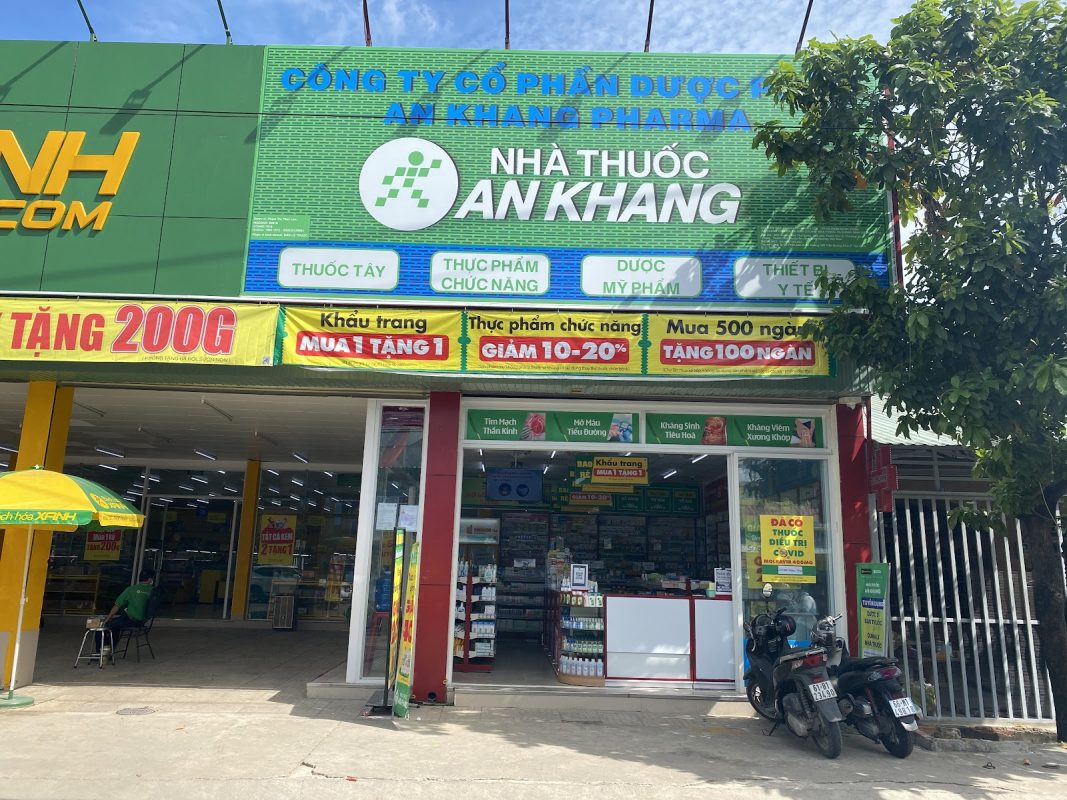
However, in the first quarter of this year, Mobile World Group decided to close all its branches in Cambodia. The main reason for this decision was that the market size was too small, and their products were priced much higher than local small shops, leading to poor performance. However, Mobile World Group does not intend to give up on the Southeast Asian market. In 2022, they established a joint venture with PT Erajaya Swasembada Tbk, the largest local mobile retail company in Indonesia, and opened five 3C specialty stores named EraBlue.

Nguyen Duc Tai often metaphorically compares Mobile World to a clouded leopard, indicating its ability to adapt quickly to the environment. However, he also self-deprecatingly acknowledges that being a clouded leopard often means lacking endurance. So, how is Mobile World performing in its various business sectors currently?
02 Status of The Gioi Di Dong’s businesses
First, let’s look at 3C retail.
Currently, 3C retail contributes approximately 40% of the group’s revenue. This includes mobile phones and accessories, tablets, laptops, cameras, and other electronic products, which are sold through Mobile World and Blue Store. The company offers a range of brands such as Apple, Samsung, Sony, LG, Xiaomi, Oppo, and more.
The upstream suppliers for these 3C products primarily consist of two types. The first type includes factories established in Vietnam by various brands, and the second type comprises mobile phone wholesale companies. In order to tap into the untapped market, Mobile World has also collaborated with the two largest consumer finance companies, FE Credit and Home Credit, to offer consumer loan services. Additionally, in 2021, they started expanding the traditional channel of small convenience stores, enabling store owners to place orders for customers through the Mobile World app. After 7 days, the store owners receive a commission of 5-20% from the sales revenue.
In addition to physical stores, this business segment has established an independent official website and frequently holds promotional activities. They have implemented an O2O (online-to-offline) model, where customers can purchase products online and pick them up from physical stores. The overall online revenue accounts for 9-14% of the total revenue in the past five years.
However, despite the overall digital products revenue of the group having a CAGR of 7% from 2019 to 2022, the revenue growth of Mobile World stores during this period averaged only 1%. There are two main reasons for this: first, the group had to close 83 stores due to the outbreak of the COVID-19 pandemic in 2020, resulting in an 11% year-on-year decline in revenue; second, the smartphone market started to saturate.
Nevertheless, Mobile World still maintains its leading position in the digital products market with a market share of over 50%. The second-ranked player, FPT Shop, and other major players such as Viettel Store, and Hoàng Hà Mobile, combined, hold only 30% of the market share.
Now let’s turn our attention to the appliance business.
The appliance business is the second-largest business segment of the group, with its revenue share decreasing from 40% in 2019 to 32% in 2022, and it is solely sold through Dien May Xanh. The specific products include white goods and consumer electronics, featuring major international brands such as Panasonic, LG, Sharp, and Midea. The upstream and distribution channels for appliances are similar to those of digital products.
The CAGR of appliance revenue from 2019 to 2022 is 2%, with an average growth of 6% in revenue for Dien May Xanh, despite a 31% annual increase in the number of stores. Such low growth can be attributed primarily to reduced consumer spending on entertainment or non-essential appliances during the pandemic period.
However, Dien May Xanh still remains a top player in the Vietnamese appliance retail market, with a market share of 50%. Channel retailers like Media Mart, Pico, Nguyễn Kim, and HC collectively account for only 30% of the market share, while the rest is comprised of small retailers.
Next, let’s examine the ups and downs of the fresh produce and FMCG retail sector.
As the third-largest business segment, its revenue share within Mobile World increased from 10% in 2019 to 20% in 2022. The product composition includes fresh and frozen produce (38%), other food and beverages (42%), personal care products, and others (20%). The majority of vegetables in Bach Hoa Xanh are provided by the group’s subsidiary, 4K Farm, through its self-operated vegetable farms.
In 2021, the number of offline stores for Bach Hoa Xanh reached its peak at 2,106, but the online channel contribution was relatively small, accounting for only 3% of total revenue in 2022.
Due to rapid expansion, the revenue of Bach Hoa Xanh in 2021 was three times that of 2019. However, with the reopening of traditional vegetable markets, the revenue of Bach Hoa Xanh declined again. In 2022, the group closed 378 stores and started adjusting store shelves, focusing only on high-frequency SKUs (Stock Keeping Units).
Bach Hoa Xanh has experienced a significant increase in market share in recent years, rising from 5.6% in 2018 to 27.8% in 2021, ranking second, with Co.opMart in the first position.

03 The future of The Gioi Di Dong
We have three perspectives on the development of Mobile World:
1. Retail Success without Price Wars:
Being successful in retail does not necessarily mean engaging in price wars. Product quality and service are equally important. Mobile World differentiates itself from other 3C retailers by offering products at relatively higher prices. The secret to maintaining its market share lies in clear product sourcing and reliable and enthusiastic customer service, from consultation to after-sales support. The author remembers their first shopping experience at a Mobile World store, where security personnel helped with parking, doors were opened by staff members, and courteous greetings were exchanged. The staff provided helpful information without being pushy. Despite only buying a small hairdryer, the author experienced five-star hotel-like service.
2. Expansion is not always the right strategy in retail:
Regardless of the product category, Mobile World’s approach has been rapid expansion, which often leads to numerous store closures and an overall decline in return on investment (ROI). Although this strategy is based on the preference of Vietnamese consumers for offline shopping, it still requires careful evaluation and decision-making.
3. Understanding the trends before quickly seizing opportunities:
By observing the development trajectory of the Mobile World, it is evident that whenever existing businesses reach saturation or experience declining performance, the group quickly ventures into new product categories. If the 3C sector faces challenges, they explore fast-moving consumer goods (FMCG); if FMCG sales are not favorable, they move to pharmaceuticals, maternal and child products, sportswear, clothing, jewelry, bicycles, and the AVA series. When domestic growth slows down, they expand internationally. It cannot be denied that Mobile World has successfully captured opportunities in every new field it has entered.
For example, in 2004, Mobile World entered the 3C market when the mobile penetration rate in Vietnam was just beginning. In 2014, they ventured into other retail categories, coinciding with the influx of foreign investment (mainly from Thailand) into the Vietnamese market. In 2021, they entered the pharmaceutical sector, taking advantage of increased health awareness among the Vietnamese population due to the pandemic.
However, these successes were short-lived. The revenue of the Green Grocery segment started to decline, accumulating a loss of 810 million RMB over seven years. After expanding extensively, An Kang Pharmacy had to halt operations and even close some stores. The AVA series, except for AVAKIDS, closed all its doors within six months. After four years of unsuccessful operations in the Cambodian market, Mobile World had to withdraw.
Kirin Capital is a research-driven equity investment company headquartered in Hanoi, Vietnam. Its core members have more than 20 years of financial experience in China and more than 10 years of financial and industrial investment experience in Vietnam. The investment covers TMT, large consumption, manufacturing, health care and financial services, and other fields, and spans all stages of equity investment such as seed investment, venture capital, private equity investment, listed company investment, and M&A investment.
Our vision is “Know Vietnam, Long Vietnam”. Through rich financial experience and local resources, we will be a guide for investors at home and abroad to invest in Vietnam and share Vietnam’s rapid growth development dividends.
If you have any needs related to the Vietnam market or would like to participate in our Kirin Views program and share your insights into the local market, please feel free to contact us HERE

